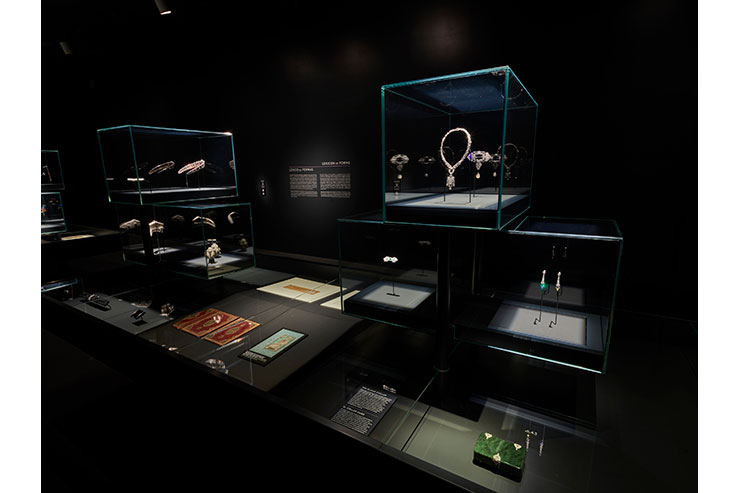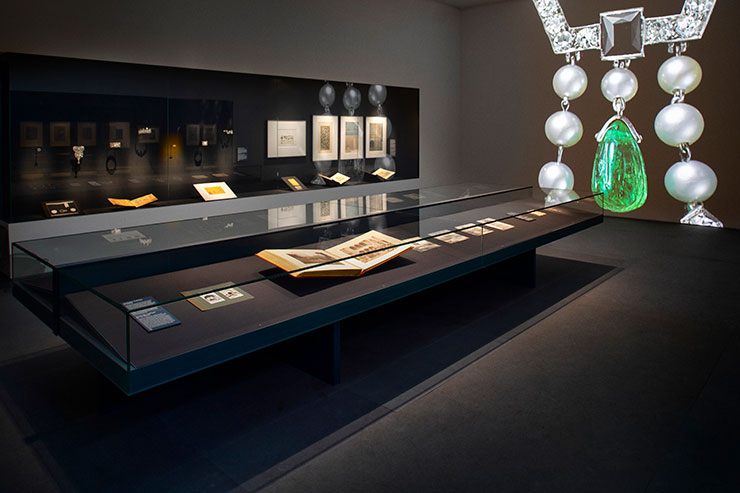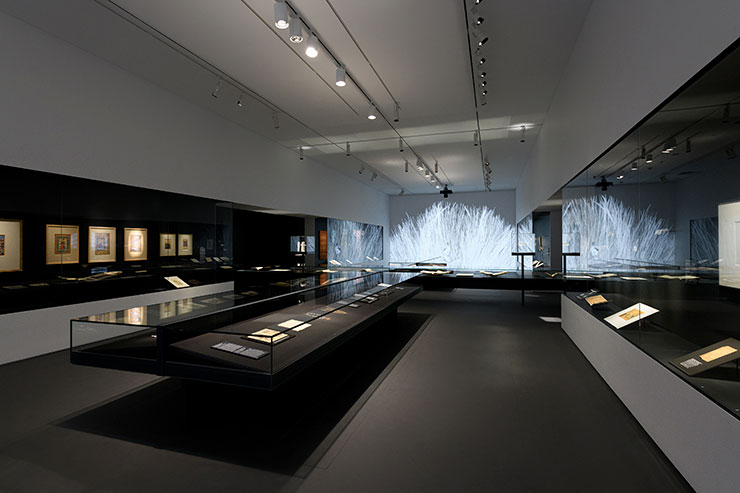- ABOUT
- JUDGING
- CONTACT
- MORE
- 2024 Entries
- Installations 2024
- Past Winners
- Subscribe
- [d]arc directory
- arc magazine
- darc magazine
Cartier and Islamic Art: In Search of Modernity Exhibit, USA
ProjectCartier and Islamic Art: In Search of Modernity ExhibitLocationTexas, USALighting DesignTillotson Design Associates, USAArchitectDiller Scofidio + Renfro, USAAdditional DesignDigital Content: Diller Scofidio + RenfroClientDallas Museum of ArtLighting SuppliersErco, Design Plan, Edison Price (existing museum-stock fixtures), Altman (existing museum-stock fixtures)PhotographyChad Redmon and John Smith
Cartier and Islamic Art: In Search of Modernity, a showcase of the influence of Islamic art on the collections of Maison Cartier, was a celebration of materiality and scale. The exhibition, which featured more than 400 precious jewelry items, archival documents, books, and photographs, allowed visitors to experience curated theatrical moments of light, shadow, and dynamic projection, which struck a delicate balance between the monolithic volumes of the architecture and the delicate textures and colors of the Cartier pieces.
Throughout the galleries existing and new track locations were strategically utilized to provide context and sense of space through use of a cooler color temperature and diffuse wall washing of select architectural backdrops. Artifacts within the wall-mounted cases were lit with tight, controlled beams of light from both inside and outside of the cases to create the necessary contrast required to provide prominent presence for each piece in the context of the surrounding architecture. Strategically placed overhead LED framing projectors with custom gobos tailored each beam of light to control spill and enhance the specific materiality of the jewels and natural stone pieces, creating an awed sense of glow from within.
In the central convergence space of the exhibition, a combination of existing halogen and new LED track fixtures were layered with carefully concealed in-case lighting to softly frame works on paper and textiles, providing added contrast with the case backdrops. Tight, controlled beams of light provided striking presence for smaller, more precious pieces juxtaposed within the same cases. Depending on the piece being illuminated, diamonds versus coral versus emeralds, the color temperature of each light source was individually curated through the use of color filters, with careful consideration given to minimize spill light to maintain the illusion that all were lit with the same source.
As visitors proceed through the exhibition, key artifacts were momentarily highlighted within the space through wireless control of LED projectors, as large-scale images of the pieces were projected on the end walls further showcasing their intricate geometric details. In addition to the coordinated choreography of the lighting with the projector timing, the additive light on the featured artifacts was carefully programmed to adhere to the strict light level requirements of each piece.
The portion of the exhibition marking the halfway point was enveloped by black walls and ceilings, with timed, carefully dimmed, projections filling each end wall. Delicately stacked, all-glass casework provided 360-degree views of the precious jeweled pieces. Overhead projectors emphasized the hierarchy created by the casework by softly framing the bottom tier and using targeted, controlled beams of light to enhance the unique features of each piece within the upper tiers. (Image 7)
The conclusion of the exhibition featured the Tutti Frutti collection, along with the “Breathing Necklace,” which was lit from overhead with custom framing projectors to enhance the sparkle of the piece as it slowly shifts position from flat to upright on an automated case support. (Image 9)








